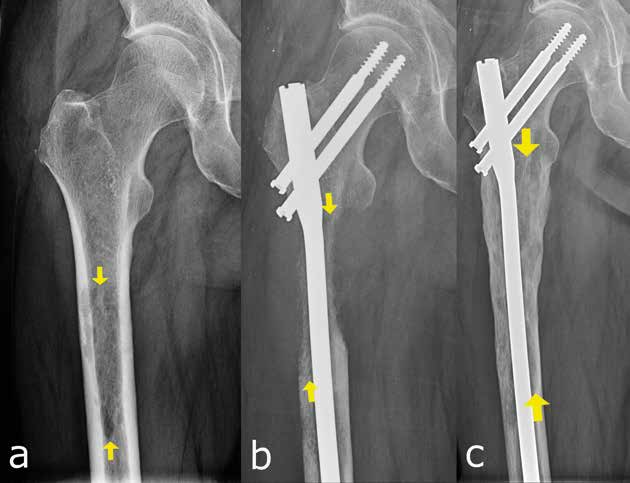Abstract
Introduction: Multiple myeloma (MM) is a neoplastic disease caused by clonal proliferation of plasma cells in the bone marrow. The median age of newly diagnosed patients is 69 years. Bone involvement occurs in most patients during the course of the disease. The management of bone involvement in MM includes surgical intervention. Bones affected by osteolytic lesions are weakened and require stabilization through implants or endoprostheses. The intramedullary osteosynthesis method appears to be an ideal choice for stabilizing osteolytic lesions in long bones. The aim of our study was to analyze whether prophylactic fixation of these lesions improves the quality of life of the patients and has any impact on bone changes.
Methods: Patients undergoing prophylactic intramedullary osteosynthesis were operated on at the University Hospital Brno between 2013 and 2023. Patients included in this study had osteolytic lesions in long bones, Mirels’ score equal to or greater than 8, and a minimum follow-up of 12 months. We evaluated the intensity of pain using a visual analog scale (VAS) assessed before the operation, after the operation, and one-year post-operation. The Musculoskeletal Tumour Society score (MSTS) score was assessed just before the planned stabilization procedure and one year later.
Results: At the time of the assessment, a statistically significant difference was found between the VAS score before the operation and 14 days post-operation (p<0.001), as well as between the VAS score before the operation and one-year post-operation (p<0.001). The comparison of MSTS scores before the operation and one-year post-operation also showed statistical significance (p=0.006).
Conclusion: Prophylactic intramedullary stabilization of osteolytic lesions in MM patients is an effective method that reduces pain and improves the quality of life for these patients.


